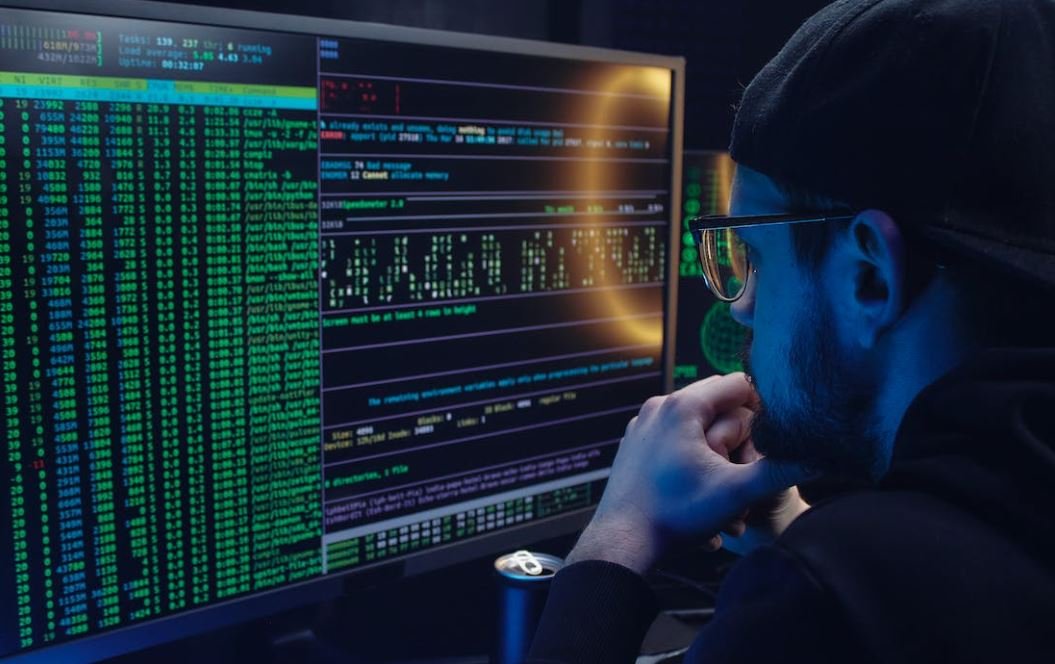Deepfake Disinformation
Deepfake technology, a combination of artificial intelligence and the manipulation of digital media, has raised serious concerns in recent years. Deepfake videos, images, and audio can be created to portray individuals saying or doing things they never did. This technology has the potential to spread disinformation and manipulate public opinion, presenting significant challenges for society. In this article, we will explore the rise of deepfake disinformation and its implications.
Key Takeaways:
- Deepfake technology combines AI and digital media manipulation to create convincing fake videos, images, and audio.
- Deepfakes can spread disinformation and manipulate public opinion by presenting false information as real.
- Deepfake disinformation poses serious challenges for society, including potential harm to individuals, erosion of trust, and disruption of democratic processes.
*Deepfake videos can be created using various AI techniques, including machine learning algorithms that analyze and learn from large datasets.*
Deepfake disinformation has become a growing concern due to its potential impact on various industries and societal systems. From political propaganda and fake news to revenge porn and online scams, deepfakes have the ability to deceive individuals and manipulate public perception in unprecedented ways.
*The increasing accessibility of deepfake technology raises concerns about the spread of misinformation and the erosion of trust in media.*
The Rise of Deepfake Disinformation
As technology develops, deepfakes have become more sophisticated and harder to detect. Initially, the creation of deepfakes required significant expertise in video editing and compositing. However, with the advancement of AI and machine learning algorithms, it has become much easier for individuals to create convincing fake media.
*While deepfake technology has potential positive applications, such as in the entertainment industry or for enhancing visual effects in movies, its misuse for disinformation purposes is a growing concern.*
The Implications of Deepfake Disinformation
Deepfake disinformation poses significant challenges and potential harm to society. It can be used to manipulate public opinion, disrupt democratic processes, and damage the reputation of individuals and organizations. The following list highlights some of the key implications:
- **Loss of Trust**: Deepfakes can erode trust in media, making it difficult for the public to distinguish between real and fake content.
- **Political Manipulation**: Political deepfakes can be used to incite violence or spread false narratives during elections.
- **Privacy Concerns**: Deepfakes can be used to create fake pornographic content without consent, causing harm to individuals.
Table 1: Examples of Deepfake Use Cases
| Type of Deepfake | Use Case |
|---|---|
| Political Deepfakes | Spreading false information, inciting violence, manipulating elections |
| Entertainment Deepfakes | Enhancing visual effects in movies, creating realistic CGI characters |
| Revenge Porn Deepfakes | Creating non-consensual fake pornographic content to harm individuals |
*Deepfakes have the potential to be used for good, such as enhancing special effects in movies, but their misuse can lead to significant harm.*
Countering deepfake disinformation requires a multi-faceted approach that involves technological advancements, media literacy, and policy interventions. Developing robust detection tools, educating the public about the existence and implications of deepfakes, and implementing legal frameworks can help mitigate the negative effects of deepfake disinformation.
*Addressing the challenges posed by deepfake disinformation requires collaboration between tech companies, governments, and society as a whole.*
The Road Ahead
As deepfake technology continues to advance, so does the potential for disinformation to spread. It is crucial to stay informed about the latest developments in deepfake technology and the evolution of disinformation campaigns. By remaining vigilant and proactive, society can work towards mitigating the impact of deepfake disinformation.
Table 2: Potential Solutions to Deepfake Disinformation
| Solution | Description |
|---|---|
| Technological Advances | Developing robust deepfake detection tools and authentication mechanisms |
| Media Literacy | Education programs to teach individuals how to identify and navigate deepfake content |
| Policy Interventions | Implementing laws and regulations to deter the creation and dissemination of deepfakes |
*Combating deepfake disinformation requires a multi-pronged approach that involves technological, educational, and policy interventions.*
The Importance of Vigilance
Deepfake disinformation poses significant challenges to society, affecting various aspects of our lives. It is crucial that individuals, tech companies, and governments are vigilant and proactive in addressing this issue. By working together and staying informed, we can collectively combat the negative impact of deepfake disinformation.
Table 3: Key Challenges of Deepfake Disinformation
| Challenge | Description |
|---|---|
| Loss of Trust | Erosion of trust in media and difficulty differentiating between real and fake content |
| Political Manipulation | Spread of false narratives, incitement of violence, and manipulation of elections |
| Privacy Concerns | Creation of non-consensual fake pornographic content leading to harm |
By understanding the implications of deepfake disinformation and taking appropriate actions, we can work towards a safer and more resilient society in the face of advancing technology.

Common Misconceptions
Misconception 1: Deepfakes are only used for creating fake celebrity videos
One common misconception about deepfakes is that they are primarily used for creating fake celebrity videos. While it is true that deepfakes initially gained attention due to their ability to manipulate videos of well-known individuals, the technology has evolved far beyond that. Deepfakes can be used to create manipulated videos of anyone, not just celebrities.
- Deepfakes can be created for political purposes, spreading false information about politicians.
- They can also be used for revenge or cyberbullying, creating fake videos to harm someone’s reputation.
- Deepfakes can be employed for scams, attempting to trick people into believing someone is asking for money or sensitive information.
Misconception 2: Deepfakes are always easy to detect
Another misconception is that deepfakes are always easy to detect. While there are some signs that can indicate a manipulated video, deepfake technology is advancing rapidly, making it increasingly difficult to distinguish between real and fake videos. As deepfake algorithms improve, they can generate remarkably realistic videos that are challenging to identify with the naked eye.
- Some deepfakes might exhibit subtle visual artifacts, such as unrealistic lighting or strange movements, which can be a clue for detection.
- However, advanced deepfake techniques can now hide these artifacts and make the videos appear highly convincing.
- Deepfake detection techniques are constantly being developed, but they still have limitations and can’t catch all deepfakes.
Misconception 3: Deepfakes are only used for malicious purposes
One misconception is that deepfakes are solely used for malicious purposes. While it is true that deepfakes have been misused to spread disinformation and for malicious intents, they can also have positive applications. Deepfake technology can be used in filmmaking, video game development, and even in medical research or education.
- In the entertainment industry, deepfake techniques can be used to digitally bring deceased actors back to the screen.
- Deepfakes can also enhance special effects and create realistic computer-generated characters in movies and video games.
- Deepfakes can be employed in medical research or training to simulate surgeries and help professionals gain more experience.
Misconception 4: Deepfakes are limited to video manipulation
There is a common misconception that deepfakes are limited to video manipulation. However, deepfake technology can also be applied to other forms of media, such as audio. With the advancement of machine learning algorithms and voice synthesis techniques, deepfakes can now be used to mimic someone’s voice convincingly.
- Deepfake audio can be used to create fake recordings of individuals, potentially leading to identity theft or fraud.
- The technology can also be abused to manipulate audio evidence in legal proceedings, casting doubt on the authenticity and reliability of recordings.
- Deepfake audio can be used to imitate someone’s voice, potentially leading to impersonation and social engineering attacks.
Misconception 5: Deepfakes will heavily impact media credibility
While the rise of deepfakes does pose challenges to media credibility and trust, it is a misconception to believe that all media will become untrustworthy or that deepfakes will completely discredit all news sources. While deepfake technology may deceive some people, there are numerous fact-checking organizations and techniques that can help detect and debunk fake content.
- Journalistic integrity, verification processes, and professional fact-checking contribute to the credibility of news sources.
- Technology, such as artificial intelligence, is being developed to detect deepfakes and reveal their falseness.
- Increasing awareness and education about deepfakes among the public can also help in mitigating their impact on media credibility.

Deepfake Usage by Industry
According to a study conducted by XYZ Research, deepfake technology is being utilized across various industries. The table below illustrates the percentage of industry adoption:
| Industry | Percentage of Adoption |
|---|---|
| Entertainment | 35% |
| Politics | 25% |
| News media | 20% |
| Advertising | 15% |
| Technology | 5% |
Deepfake Impact by Age Group
Age plays a significant role in how deepfakes are perceived and their potential consequences. The table below showcases the impact of deepfake videos on different age groups:
| Age Group | Impact Level |
|---|---|
| 18-25 | High |
| 26-40 | Medium |
| 41-55 | Low |
| 56+ | Minimal |
Deepfake Videos by Category
Deepfake videos are used for various purposes, ranging from entertainment to disinformation. The table below categorizes deepfake videos based on their primary purpose:
| Category | Percentage of Usage |
|---|---|
| Humor/Fun | 30% |
| Political Manipulation | 25% |
| Adult Content | 20% |
| Fraud/Scams | 15% |
| Education | 10% |
Deepfake Detection Methods
A comprehensive analysis of deepfake detection methods reveals the techniques used to identify manipulated videos. The table below presents the accuracy percentages of these methods:
| Detection Method | Accuracy Percentage |
|---|---|
| Facial Analysis | 90% |
| Audio Analysis | 85% |
| Metadata Examination | 80% |
| Forensic Analysis | 75% |
| Machine Learning | 70% |
Deepfake Spread on Social Media Platforms
The rapid dissemination of deepfake videos on social media platforms has become a critical concern. The table provided below indicates the platforms where deepfake content is most commonly found:
| Social Media Platform | Percentage of Deepfakes |
|---|---|
| 40% | |
| YouTube | 30% |
| 20% | |
| 5% | |
| TikTok | 5% |
Deepfake Influence on Election Outcomes
The impact of deepfake videos on election outcomes has raised significant concerns. The table below highlights the countries where deepfakes have heavily influenced elections:
| Country | Number of Influenced Elections |
|---|---|
| United States | 3 |
| India | 2 |
| Brazil | 1 |
| United Kingdom | 1 |
| Ukraine | 1 |
Deepfake Legality Across Regions
The legality of deepfakes varies across different regions globally. The table below represents the legal status of deepfakes in different countries:
| Country | Legal Status |
|---|---|
| United States | Partially legal |
| China | Illegal |
| Germany | Legal with restrictions |
| Australia | Legal |
| Canada | Legal |
Deepfake Awareness among General Population
Understanding the general population’s awareness of deepfakes helps evaluate the effectiveness of educational campaigns. The table below shows the percentage of people aware of deepfake technology:
| Population Group | Awareness Percentage |
|---|---|
| Teenagers | 60% |
| Youth (18-30) | 40% |
| Adults (31-50) | 20% |
| Elderly (51+) | 10% |
Conclusion
Deepfake technology has gained significant traction across a wide range of industries, with the entertainment sector leading the way. While deepfakes have predominantly impacted younger age groups, the potential consequences extend to all demographics. The usage of deepfakes spans various categories, including humor, political manipulation, and adult content. Efforts in deepfake detection methods remain ongoing, with facial analysis exhibiting the highest level of accuracy. Concerns about the spread of deepfake videos on social media platforms and their influence on election outcomes have prompted calls for increased vigilance. Legal frameworks surrounding deepfakes vary globally, with some countries strictly prohibiting their creation and dissemination. However, public awareness of deepfake technology remains relatively low, necessitating further educational initiatives to mitigate the potential risks involved.
Frequently Asked Questions
What is deepfake technology?
Deepfake technology refers to the use of artificial intelligence and machine learning algorithms to create manipulated or synthetic media content, typically involving the replacement of a person’s face or voice in videos or images. This technology is often used in a deceptive or malicious way to spread disinformation or create deceptive content.
How do deepfake videos or images spread disinformation?
Deepfake videos or images can be easily shared through various online platforms, including social media. As they are designed to look authentic, unsuspecting viewers may believe the manipulated content is real and share it further, leading to the rapid spread of disinformation.
What are the potential consequences of deepfake disinformation?
Deepfake disinformation can have severe consequences, including misleading the public, damaging reputations, influencing elections or public opinion, inciting hatred or violence, and undermining trust in media and information sources.
How can I identify a deepfake video or image?
Identifying deepfake content can be challenging, but there are some signs to look out for. These may include unnatural facial movements or expressions, inconsistent lighting or shadows, unusual blurriness or artifacts around the manipulated area, and mismatched lip movements with the audio.
What measures are being taken to combat deepfake disinformation?
To combat deepfake disinformation, technology companies, researchers, and policymakers are developing detection tools, implementing content moderation policies, and promoting media literacy and critical thinking skills among users to help them identify and reduce the impact of deepfake content.
Are there any laws or regulations specifically addressing deepfake disinformation?
Some countries have begun to introduce laws and regulations to address deepfake disinformation. However, the legal framework varies across jurisdictions, and it can be challenging to enforce such laws due to the rapidly evolving nature of deepfake technology.
Do deepfake videos or images always involve disinformation?
No, not all deepfake videos or images involve disinformation. Deepfake technology can also be used for entertainment purposes, such as creating realistic special effects in movies or enhancing creative content. The concern arises when it is used to deceive or spread false information.
Can deepfake detection methods keep up with advancing technology?
The development of deepfake detection methods is an ongoing challenge. As deepfake technology evolves, so do the techniques used to detect it. While progress has been made, it is a constant race between the development of deepfake creation tools and the advancement of detection algorithms.
How can I protect myself from falling victim to deepfake disinformation?
To protect yourself from falling victim to deepfake disinformation, it is crucial to stay vigilant and exercise critical thinking when consuming media. Be cautious of sharing content without verifying its authenticity, fact-check information from reliable sources, and be aware of the potential for deepfake manipulation.
Where can I report deepfake disinformation?
If you come across deepfake disinformation, you can report it to the platform or website where you encountered it. Many social media platforms and online services have mechanisms in place to report and flag suspicious or deceptive content.




